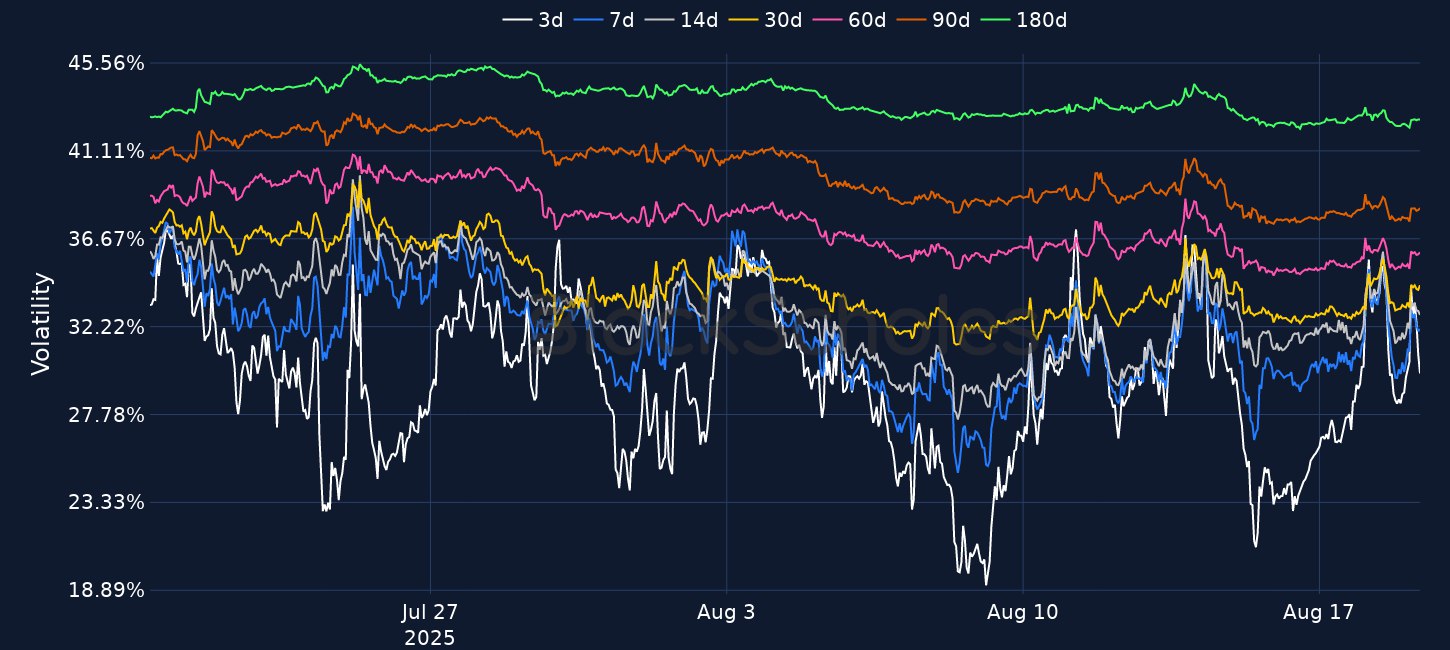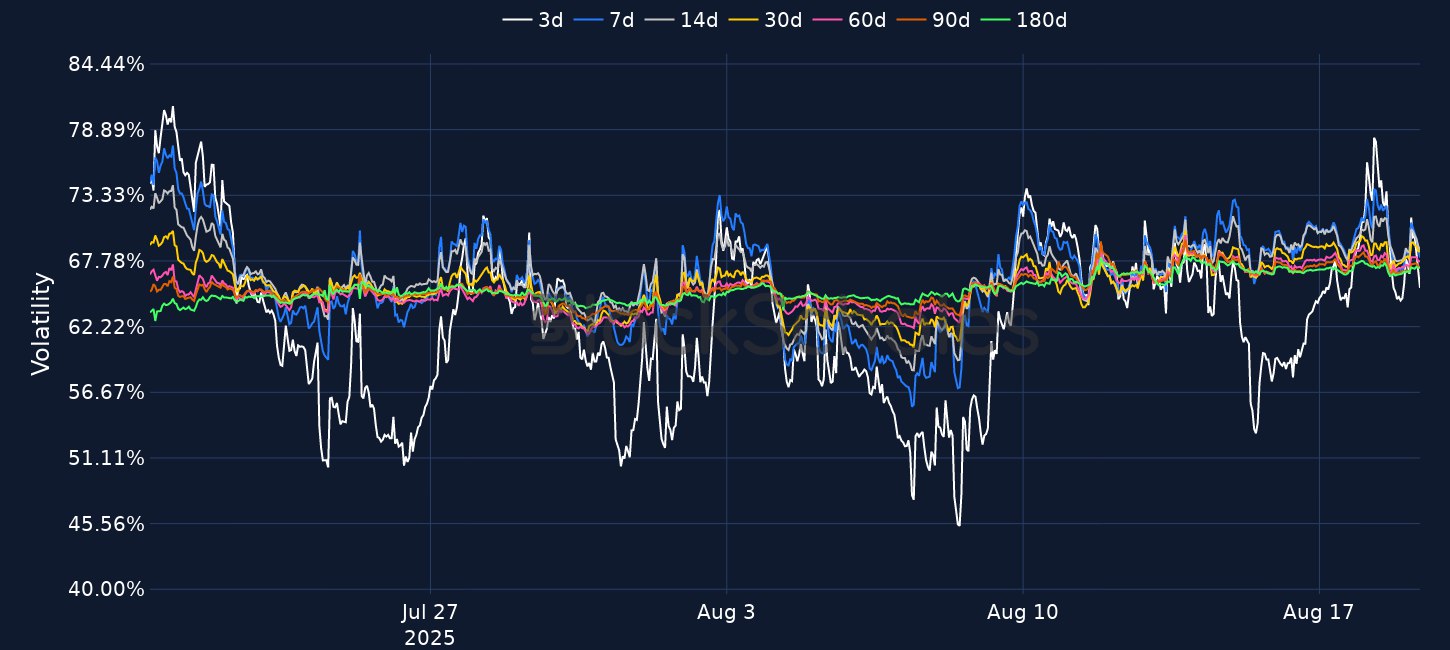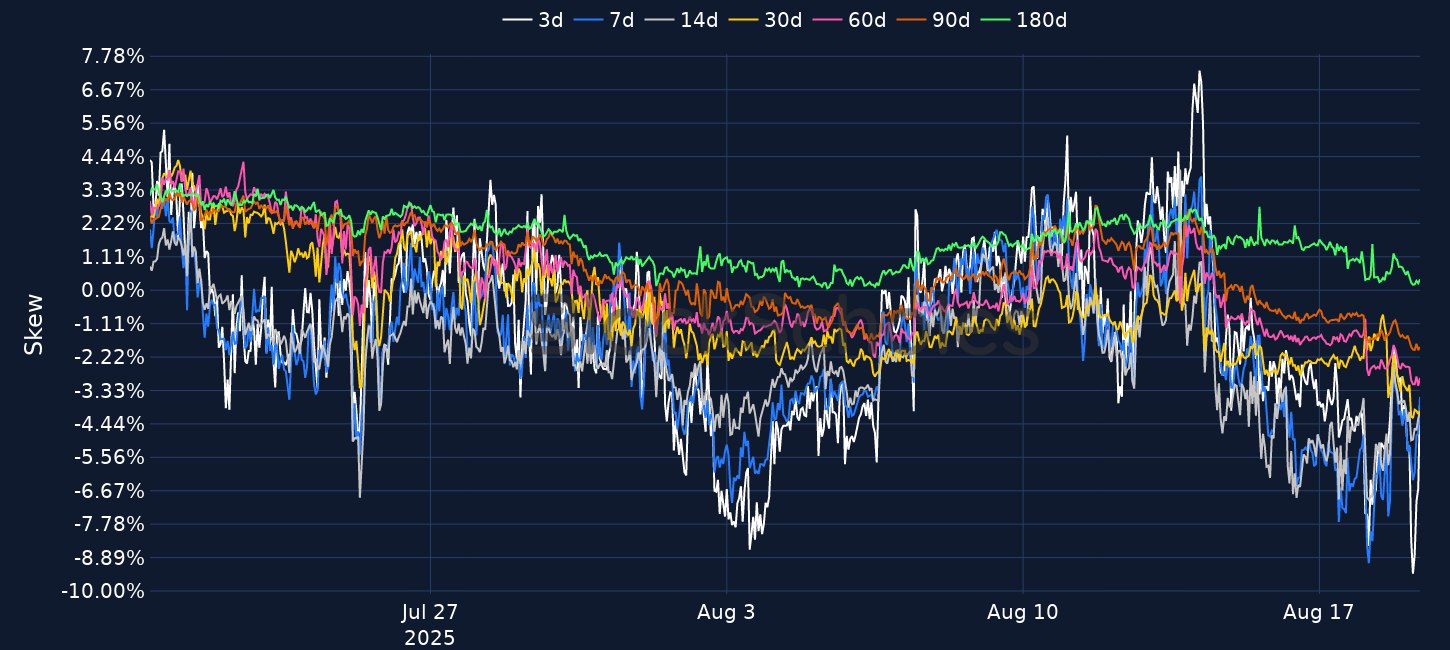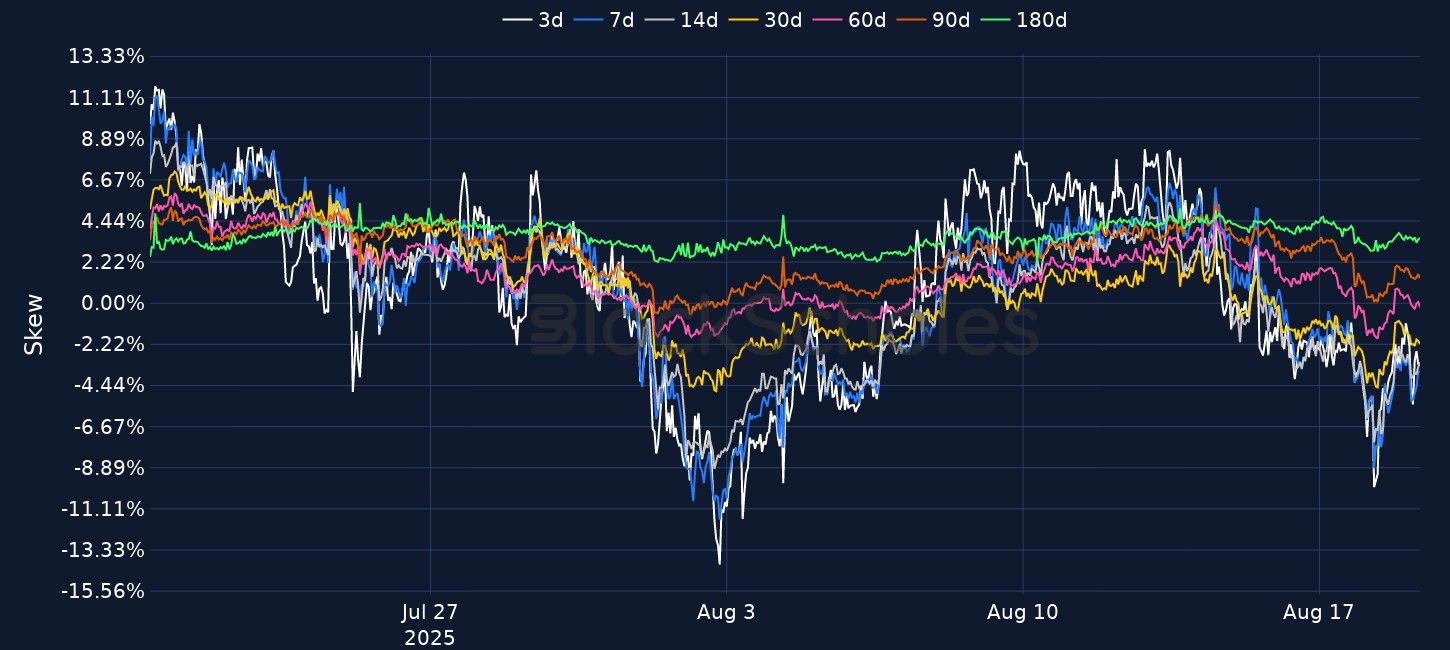Last Updated:
August 19, 2025
•
2 min read
BTC ETH Powell
BTC traded in a tight range between $114K–$117K, while ETH fell to $4,200 after approaching its all-time high. Short-term implied volatility for ETH and BTC has compressed (67–69%), with short-tenor options showing put skew of -3.4% (ETH) and -4.4% (BTC), signaling expectations of sideways or bearish moves. U.S.-listed Ethereum ETFs hold 6.3M ETH ($26.7B, 5.1% of supply) despite Monday’s $196.6M net outflows. Treasury yields rose slightly, with the 5s30s curve widening to 108bps, reflecting mixed market expectations for Fed rate cuts and persistent inflation. Investors are awaiting Fed Chair Powell’s Jackson Hole speech for guidance, while crypto IPO activity and corporate Bitcoin adoption continue to expand.

In case you missed it! Our recap of last week’s reports:
Daily Updates:
- In line with a muted start to the week on Wall St, BTC has also traded range bound between $114K and $117K.
- ETH has fallen from last week’s levels, when it came within $100 of its all-time high, and so far this week, it too has traded range-bound between $4,200 and $4,400.
- Its term structure of volatility has compressed with at-the-money implied volatility levels trading between 67% and 69%, following a small inversion earlier yesterday.
- Positioning in options markets suggests traders anticipate more sideways or bearish spot price at least over the short term. Short-tenor volatility smiles for both BTC and ETH continue to remain firmly skewed towards OTM puts — with put-call skew on 7-day BTC and ETH options at -4.4% and -3.4%, respectively.
- U.S.-listed spot Ethereum ETFs now collectively hold 6.3M ETH—worth $26.7B—accounting for 5.1% of the total supply. Digital asset treasuries also control more than 2% of ETH, per Coinbase.
- Despite the milestone, ETFs saw $196.6M in net outflows on Monday—their second-largest daily outflow since launch, SoSoValue data shows.
- The pullback cancels out about 7% of August’s $2.83B in inflows.
- Both the S&P 500 and Nasdaq 100 ended the day flat, while US treasuries slipped for a third consecutive day.
- That rally in treasury yields across the curve began last Thursday following a far higher than expected PPI inflation report. The yield on ten-year treasuries rose 2bps to 4.34%.
- The gap between short- and long-dated treasury yields has been increasing, a reflection of the market’s view that the Fed is likely to cut rates in the short-term, while still expecting higher inflation in the future.
- Indeed, last Friday’s University of Michigan inflation expectation survey showed that consumers expect prices to rise at an annual rate of 4.9% over the next year and 3.9% over the next five to 10 years. Looking beyond survey-based metrics, the 5 year breakeven inflation rate rose 10 percentage points to 2.49% last week and is currently at 2.44%.
- The 5s30s yield curve (30-year US treasury minus 5-year treasury yield) has widened to 108bps, its largest spread since October 2021.
- The muted reaction across asset classes comes as traders and investors await Fed Chair Powell’s Friday Jackson Hole speech, looking to parse for any clues regarding the path of monetary policy.
- At the symposium in 2024, Powell stated that “the time has come for policy to adjust” amidst weaknesses in the labour market. Indeed in the September FOMC meeting that followed, the Fed cut interest rates by 50bps.
- This time the picture is slightly more mixed for the Fed Chairman, as he and other Fed members have cited an expectation for higher tariff-induced inflation in the months to come.
- Powell is also under immense pressure from the US administration. President Trump has advocated that the Fed should cut rates by as much as four percentage points while Treasury Secretary Scott Bessent recently said "If you look at any model” it suggests that “we should probably be 150, 175 basis points lower.”
- The number of high profile IPO launches in 2025 continue as Gemini Space Station, the cryptocurrency trading platform, has registered for an initial public offering. It intends to trade on the Nasdaq under the ticker symbol GEMI.
- The platform’s founders, the Winklevoss twins, wrote in the IPO prospectus that financial markets "are moving onchain" and that Gemini is a "Super App" for it.
- Additionally, lending company Figure, who offer crypto-backed loans, have filed for an IPO on Nasdaq with the symbol FIGR.
- Japan-based 3D-printed housing company Lib Work Co. has announced plans to invest 500M Yen ($3.3M) to create a Bitcoin treasury.
- The move furthers Lib Work’s move into crypto, following its recent launch of NFT storage for housing design.
- Michael Saylor’s Strategy Inc. has revised its Equity ATM Guidance, allowing the sale of new common stock shares below its previously self-imposed 2.5x “mNAV premium”.
- The 2.5x “mNAV premium” meant Strategy would only issue new common stock if its share price was trading at least 2.5 times higher than the per-share value of its Bitcoin holdings.
This Week’s Calendar:
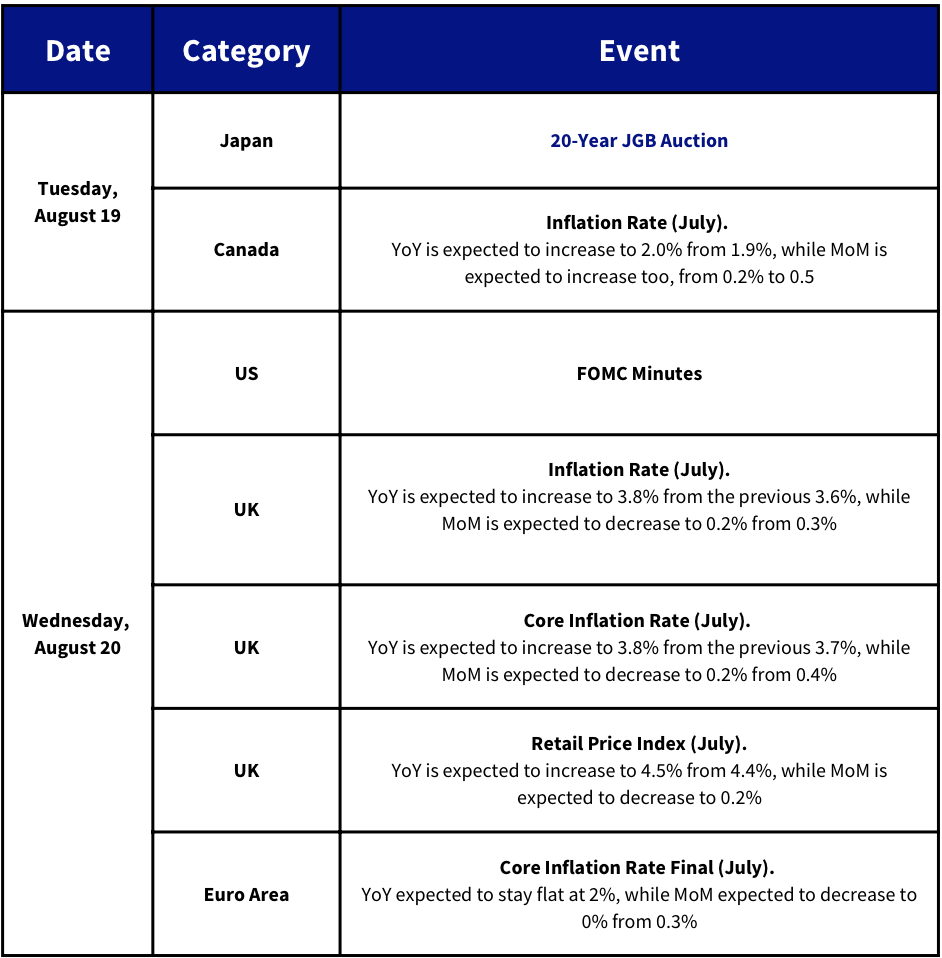
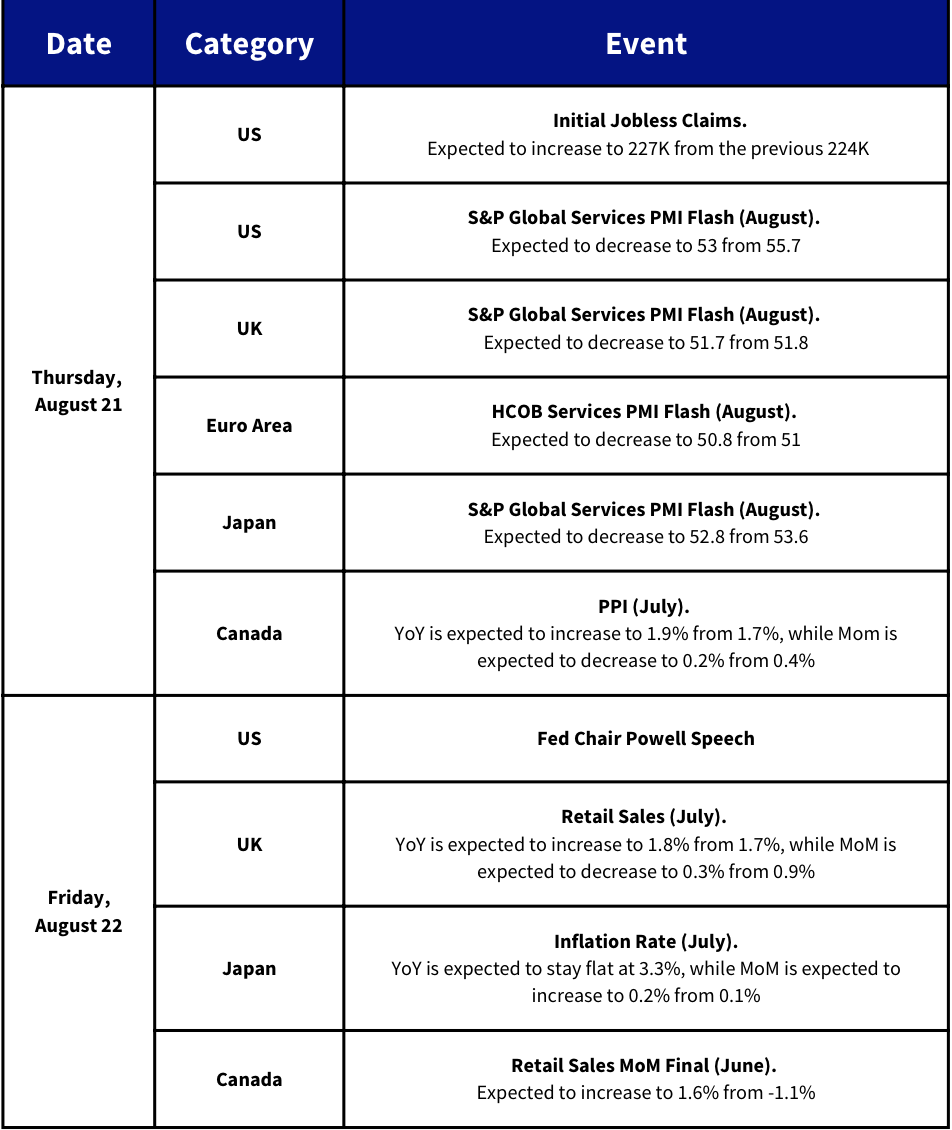
Charts of the Day:
